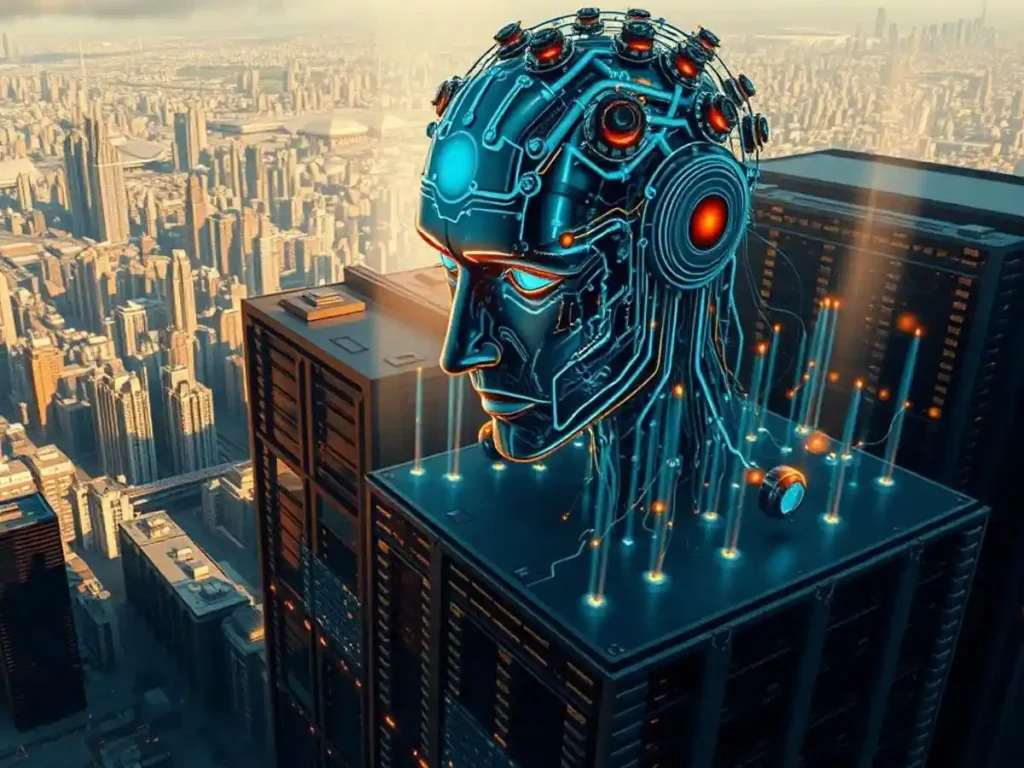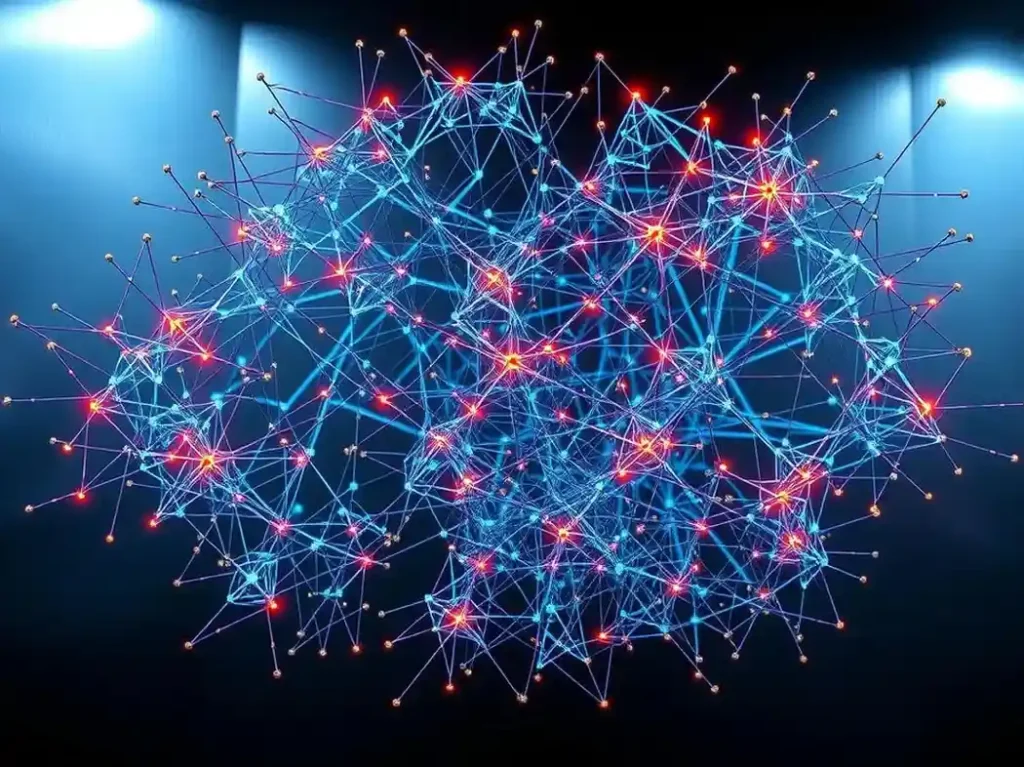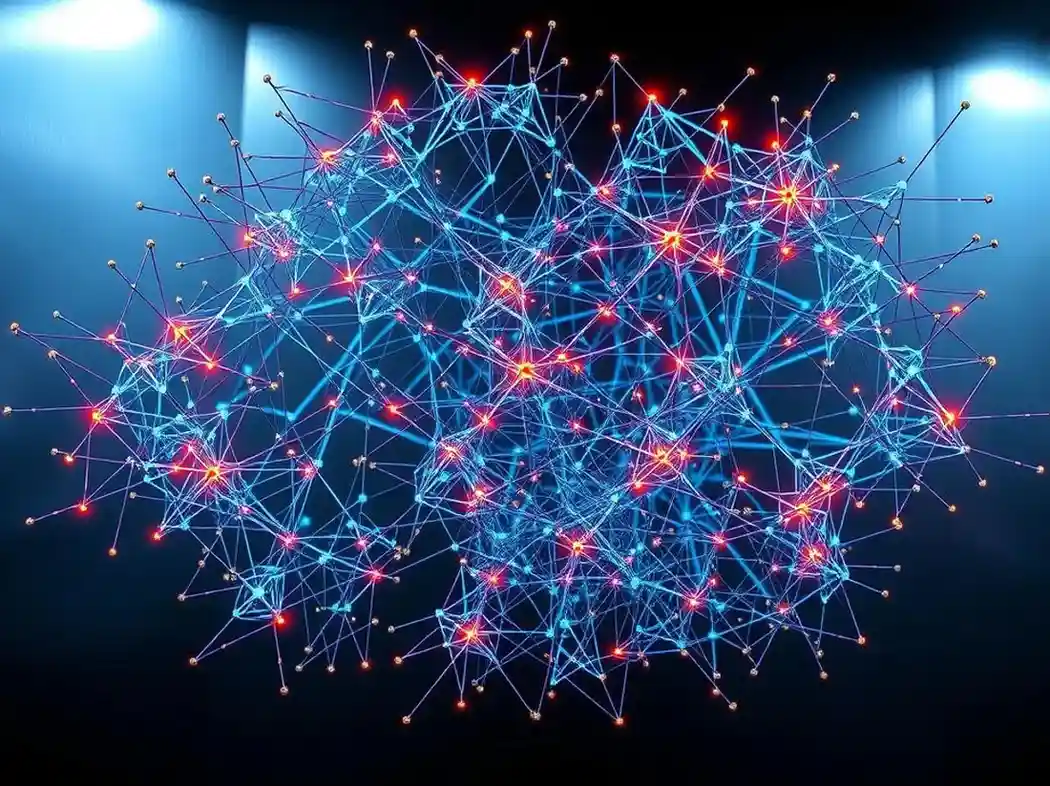A recent survey showed that over 70% of tech experts think Artificial General Intelligence (AGI) will change many industries in the next 20 years.
So, what is Artificial General Intelligence? It’s a type of AI that can understand, learn, and apply its knowledge in many areas, just like humans do.

AGI’s development is big news because it could change many fields. This includes healthcare, finance, education, and transportation. It could make things more efficient and effective.
As we’re about to enter this new era, it’s important to know when AGI will arrive and what it means for us.
Understanding AGI: Beyond Narrow Artificial Intelligence
Artificial General Intelligence, is a groundbreaking idea. It aims to make machines that can do any task a human can. This is a big step up from today’s AI, which only does specific tasks.
This means big improvements in machine learning, deep learning, and neural networks.
Defining Artificial General Intelligence
Artificial General Intelligence is AI that can think and learn like a human. It can do any task a human can, in many areas and situations.
It will have many skills, like solving problems and learning from experience. It will use technologies like natuaral language processing, computer vision, and robotics to think like us.
The Distinction Between Narrow AI and AGI
Narrow AI, or Weak AI, is made for one specific job, like recognizing faces or translating languages. AGI, on the other hand, is meant to be smart in many ways and learn from different experiences.
Here’s a table that shows the main differences between Narrow AI and AGI:
| Characteristics | Narrow AI | AGI |
| Task Specificity | Designed for a specific task | Capable of performing any intellectual task |
| Learning Ability | Limited to the data it was trained on | Can learn and adapt across various domains |
| Intelligence Scope | Narrow, task-oriented intelligence | General-purpose intelligence, similar to human intelligence |
The Evolution of AGI Research
The journey to create it has been slow but steady. Researchers have built on old ideas and new tech. This journey is filled with key moments in AI history, from the first ideas to today’s top tech.
Historical Development of AGI Concepts
The ideas started early in AI research. Alan Turing and Marvin Minsky were among the first to explore this idea.
Over time, there have been ups and downs in AI hopes. But the dream of this kept going, thanks to better computers and new ideas.
Recent Breakthroughs in AI Research
Recently, AI has made big strides, thanks to natural language processing (NLP), computer vision, and robotics. Deep learning and big data have been key to these advances.
NLP has made machines understand and create human-like language. This is a big step towards human-like smarts. Computer vision has also improved, letting AI systems see and understand the world.
Current Benchmarks for Measuring AGI Progress
To see how close we are to it, researchers use special tests. These tests check if AI can reason, solve problems, and learn
| Benchmark | Description | Relevance |
| Turing Test | Checks if a machine can act smartlike a human. | Looks at conversation and thinking skills. |
| Winograd Schema Challenge | Tests if a machine gets natural language and common sense. | Needs to understand context and subtleties. |
| General Game Playing | Sees if a machine can play many games well. | Shows adaptability and strategic thinking. |
These tests help us see how AI is doing. They also show what challenges we still face.
Key Technologies Driving the Path to AGI
Advances in many areas are helping us get closer to it. Key technologies are leading the way, making it’s potential more realizable.
Deep Learning and Neural Networks
Deep learning and neural networks have been key in AI’s recent leaps. They let machines learn from lots of data, improving their pattern recognition and decision-making. Neural networks have grown more complex, enabling more advanced AI models.
The growth of deep learning algorithms has been crucial. These algorithms can learn complex data structures, essential for tasks like image and speech recognition.

Natural Language Processing Advancements
Natural Language Processing (NLP) has made big strides, thanks to better algorithms and large datasets. NLP is vital for it, allowing machines to understand and create human language. This makes human-machine interactions more natural.
The blend of NLP with other AI tech has led to more intuitive AI systems. This has opened up new uses, from virtual assistants to automated customer service.
Computer Vision and Perception
Computer vision is essential for it, enabling machines to understand visual information. This is key for robotics and self-driving cars.
Improvements in computer vision come from more advanced deep learning models and large datasets.
Robotics and Embodied Intelligence
Robotics and embodied intelligence are crucial for it. They combine AI with physical systems, creating robots that can learn from their environment.
The development of embodied intelligence is vital for it to work in the real world. It involves processing sensory information and acting on it effectively.
Major Players in the Race for AGI
The quest for it brings together many players. This includes top research centers, big tech companies, and new startups.
Creating Artificial General Intelligence needs lots of resources, skills, and creativity. So, many different groups are involved.
Leading Research Institutions
Top research places are leading in AGI studies. These are universities and centers that focus on AI.
For example, Massachusetts Institute of Technology (MIT) and Stanford University are known for their AI work. They’re exploring new possibilities with their research.
Tech Giants’ AGI Initiatives
Big tech companies are also diving into it. Google DeepMind and Microsoft are making big moves in it’s research.
Google DeepMind is working on AI that can do many things. Microsoft is also pushing it forward, focusing on things like understanding language and seeing images.
Emerging Startups Focused on AGI
New startups are also important in this. They often bring fresh ideas and approaches.
Companies like Nuro and DeepMind spin-offs are working on special projects. Their quick thinking and creativity help move forward.

As the race goes on, working together and competing will lead to big AI breakthroughs.
Challenges and Limitations
It demands progress in machine learning and AI technology. It also needs a deep understanding of how different AI systems work together.
Technical Hurdles
Creating AI that can handle many tasks is a big challenge. Today’s AI systems are great in certain areas but not flexible like humans. Building more adaptable AI systems is key for reaching it.
Another big challenge is improving natural language processing. It needs to understand and create human-like language.
Ethical Considerations
It raises important ethical questions. As these systems become more independent, they must align with human values. Creating guidelines for it is crucial to ensure they benefit society.
The impact on jobs and society is also a concern. While it can bring many benefits, it also poses risks.
Resource Requirements
It’s development needs a lot of resources. This includes data, computing power, and AI expertise. Working together between industry, academia, and government is vital to overcome these challenges.
Also, investing in AI research is essential. This investment is not just about money but also about talent and infrastructure for it’s research.
Timeline Predictions: When Will AGI Become a Reality?
Trying to guess when it will arrive is tricky. Even top experts can’t agree. Many things affect when it will happen, like new tech, ethics, and how much computing power we have.
Recent breakthroughs in deep learning and neural networks have moved AI forward a lot. This makes it hard to say exactly when it will happen.
Expert Forecasts and Disagreements
AI experts have made many different guesses about when it will come. Some think it could be in a few decades. Others believe it might take longer, or maybe never happen.
Nick Bostrom, a philosopher and director of the Future of Humanity Institute, thinks it might show up in the21st century’s second half. But Ray Kurzweil, an inventor and futurist, says it could be as early as the 2040s.
Factors Influencing AGI Development Speed
Several things are speeding up or slowing down AGI’s development. These include better deep learning algorithms and neural networks. Also, big investments in AI by governments and companies are helping.
Improving natural language processing and computer vision is key too. These areas help make AI systems that can talk and see like humans.
The mix of these factors will decide when it arrives. As research keeps moving forward and more money goes into AI, the chance of getting here grows.
Table of Contents
Conclusion: Preparing for an AGI Future
Artificial general intelligence is becoming a reality, and we must prepare for its impact. It’s development is linked to robotics and computer vision. These advancements allow machines to understand and interact with their world better.
But, we need to keep investing in research and think about ethics. This is crucial for it to reach its full potential.
Knowing about it and its technologies helps us get ready for the future. As we move ahead, we must focus on developing it responsibly. This ensures it benefits society in a positive way.

